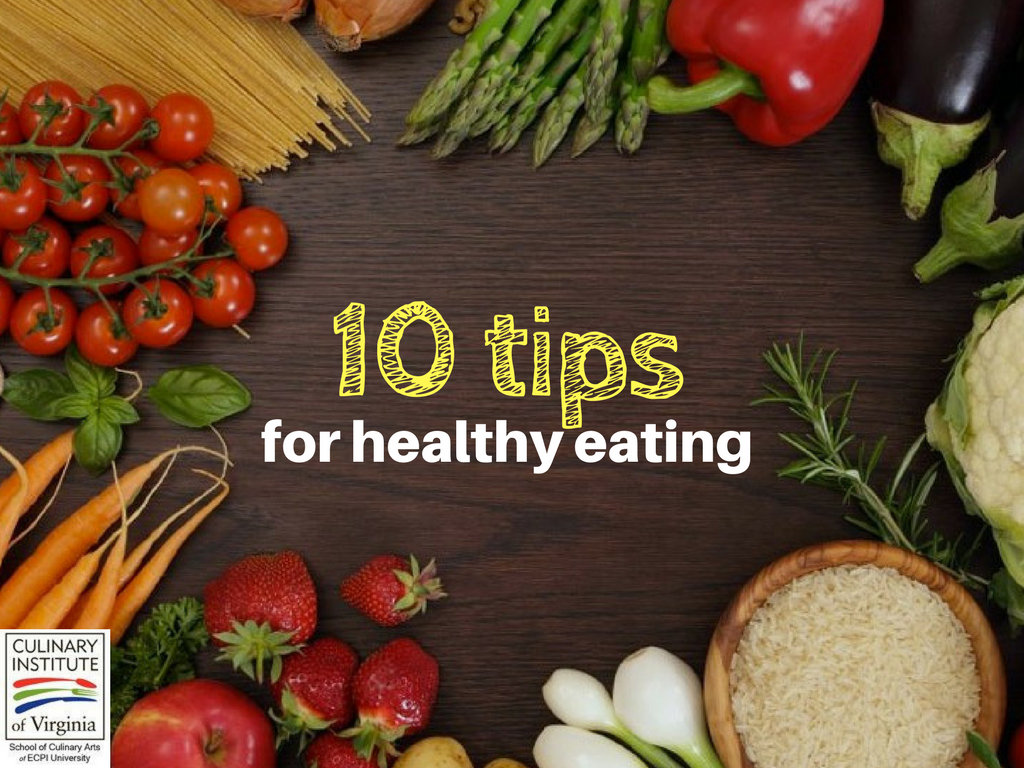10 Tips for Healthy Eating: What Culinary Nutrition Can Do for You
When you’re a chef who specializes in culinary nutrition, you will be expected to not only provide delicious food, but to provide food that meets special dietary restrictions. While some dietary needs you might be familiar with already, such as an allergy to nuts, do you know how to cooking for someone with diabetes? What about high blood pressure?
Learning all of the different ways to cook for those with special food needs requires a passion for food and a formal education in food science and nutrition with hands-on experience. If you’re interested in learning more about cooking for dietary needs, here are a few tips for healthy eating, just to get you started on your journey.
Tip 1 for Heart Healthy Cooking
The diet for heart health is fruits and vegetables first. While this might seem like a dull meal in the making, there are lots of ways to cook up delicious plates with spices, herbs, peppers, and more that your clients will love to eat.
Tip 2 for Gluten-Free Cooking
Gluten-free cooking might sound complicated, but a lot can be done by avoiding recipes that call for substantial amounts of flour. For dishes that only need a little flour to make it complete, use gluten-free flour substitutes.
Tip 3 for a Calcium Rich Diet
Clients with osteoporosis will require a calcium rich diet in order to help keep their bones healthy. While most of us think of milk when we think about calcium, there are many other foods that are rich in this nutrient. Consider trying dishes based around produce such as collard greens or kale. Seafood such as salmon and shrimp also contain high amounts of calcium.
Tip 4 to Avoid Dairy Allergies
With a recent rise in allergies, one of the most common ones is an allergy to dairy products. But making dishes that call for cream or milk can be easily handled by substituting with other milks, such as almond or soy. There are also egg substitutes available which can serve a variety of healthy diets.
Tip 5 for Weight Gain
Clients who are recovering from an illness or eating disorder might need to put weight back on in order to be healthy. Gaining weight to return to health can be done a number of different ways and you will have to refer to the doctor’s orders to see what is best for your client. Using different kinds of oils are one way to help add calories without adding in the processed foods the client doesn’t need.
Tip 6 for Vegan Cooking
It’s common to believe there’s simply nothing you can cook that’s vegan without resorting to bland vegetables. But in reality, vegan chefs, such as Chloe Coscarelli, are able to cook tantalizing vegan dishes that no food critic would ever label bland. One tip for a beginner cooking vegan is to study on exactly what ingredients and chemicals have animal products in them so if you need to read a label, you know what to look for.
Tip 7 for a Diet that Lowers High Blood Pressure
Clients with high blood pressure have specific dietary needs to help them live healthier and fuller lives. In addition to exercise, one way to help reduce high blood pressure is cooking up lots of green veggies and using whole wheat bread products in place of white bread.
Tip 8 for a Healthy Breastfeeding Diet
A breastfeeding parent generally needs about 500 more calories than the regular intake for an adult. A good diet while breastfeeding is full of the vitamins an nutrients the parent wants to pass along to their infant. Cooking for someone who is breastfeeding means including a variety of meats, veggies, grains, and milk. It’s also important to make sure the parent drinks enough fluids during this time.
Tip 9 for Diabetic Dietary Needs
When cooking for someone who is diabetic, it’s important to monitor all sweeteners used in the meal. Thankfully, sugar substitutes are easy to find. With some practice and solid diabetic-friendly recipes, you can start to find what substitutes taste the best in what recipes.
Tip 10 for Patients with Heartburn
Heartburn can be such an extraordinarily uncomfortable experience, it’s completely understandable why your client would want to avoid it. When cooking for your client, try to cut down on the hot spices and use other cooking methods besides frying. Also, make sure the portions aren’t too big as sometimes eating too much of anything can lead to this digestive issue. If you get stuck, don’t worry, there are lots of recipes that can be found.
Are you adept at preparing meals for different dietary needs? If you are interested in earning an Associate of Applied Science in Culinary Arts and Applied Nutrition, consider the Culinary Institute of Virginia, part of ECPI University, for your education. For more information, connect with a friendly admissions advisor today.
It could be the Best Decision You Ever Make!
DISCLAIMER – ECPI University makes no claim, warranty, or guarantee as to actual employability or earning potential to current, past or future students or graduates of any educational program we offer. The ECPI University website is published for informational purposes only. Every effort is made to ensure the accuracy of information contained on the ECPI.edu domain; however, no warranty of accuracy is made. No contractual rights, either expressed or implied, are created by its content.
Gainful Employment Information – Culinary Nutrition - Associate’s
For more information about ECPI University or any of our programs click here: http://www.ecpi.edu/ or http://ow.ly/Ca1ya.





